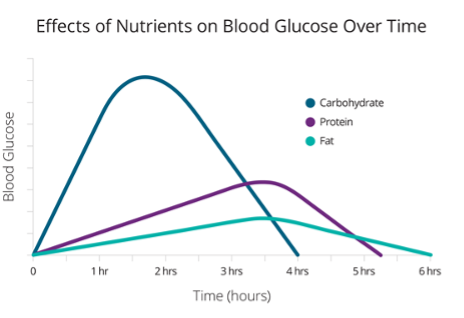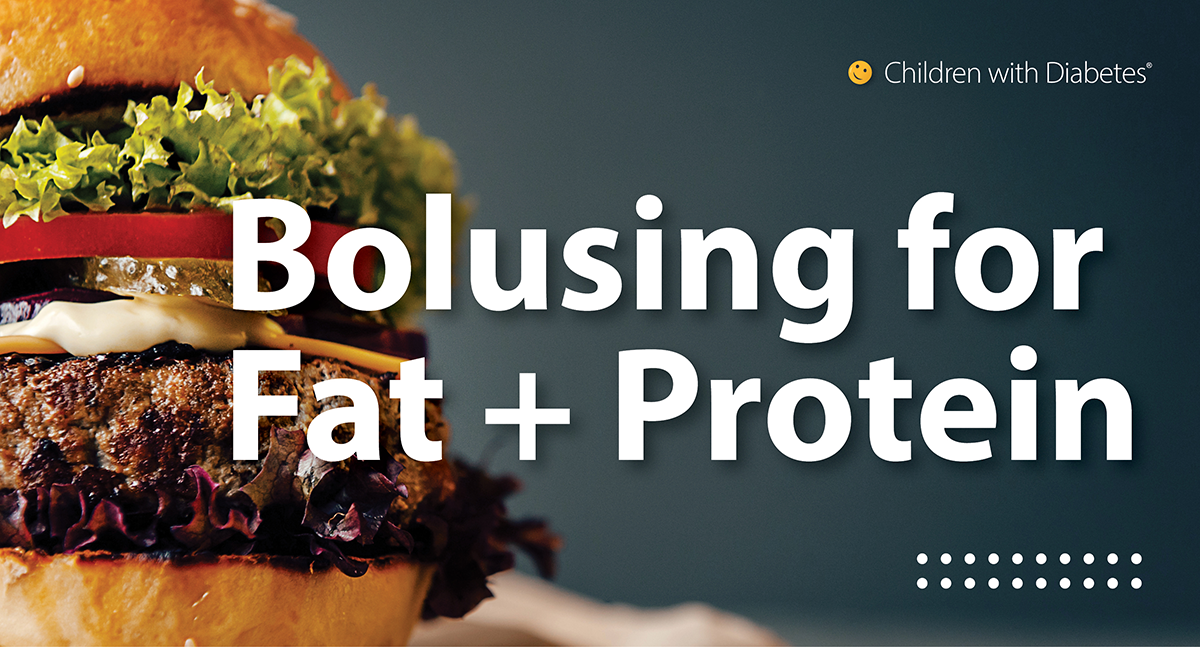The era of continuous glucose monitoring has put a spotlight on the many fluctuations that a person with diabetes (PWD) has in a day, and even in an hour sometimes. With access to this data, it is understandable why PWD are looking to make the hills in their blood sugar roller coasters less steep.
One way to help decrease the dreaded post-meal spike is to do what we can to match insulin to the food we’re eating. It’s not just about the pre-bolus; it is also about the types of food consumed and how quickly or slowly foods absorb in the body. This graph from Tandem Diabetes Care helps visualize how different foods are absorbed in the body.1

When the full contents of the meal are taken into consideration, dosing insulin to keep blood glucose levels in range is a more attainable goal. The latest clinical guidelines from the International Society for Pediatric and Adolescent Diabetes recommends ensuring people with diabetes understand the influence of fat and protein on blood sugar so that they can adjust insulin doses accordingly.2
We’re still missing guidelines on how to dose for fat and protein, though. Recently, researchers reviewed the available data on mealtime dosing for fat and protein to see if there was an easy formula for people with diabetes to use.3 They reviewed 18 studies that met their chosen criteria, which included randomized controlled trials that reported glucose levels after meals.3
Here are the key takeaways from this systematic review:3
- For meals with carbohydrates and >30 grams of fat OR >15 grams of fat + >25 grams of protein, adding 30% to the insulin to carb ratio was most effective
- Example: If your insulin to carb ratio is 1 unit for every 10 grams of carbs, you would instead dose 1 unit for every 7 grams of carbohydrates
- The insulin taken for these types of meals needs to be given over a longer period, and not entirely up front.
- The amount of time extended can vary by person and by the meal.
- The recommendation is to take 60-70% of the meal dose 15 minutes before the meal and extend the rest of the bolus between 1 -3 hours
- If you take injections and are not on an insulin pump, there is not enough research to support taking multiple injections to attempt an extended dose
- If you do not have a continuous glucose monitor, check your blood glucose at 1.5 hours, 3 hours, and 6 hours after the meal to see how your dosing strategy mapped.
The bottom line is that diabetes is very individualized. Doing trial-and-error tests with foods that you consume regularly is the best way to determine what is right for you and your family. You can try ordering the same pizza from the same restaurant and see if you can really nail the bolus for it. If it helps, keep a note on your phone with the various combinations that you have tried so you can keep track of your progress and adjust as needed in the future.
For more information on bolusing for fat and protein, you can check out our Screenside Chat with Pediatric Endocrinologist Dr. Laya Ekhlaspour. Dr. Ekhlaspour works at Stanford University in both clinical and diabetes research. We also have an article about Glycemic Index, which is also important when it comes to insulin calculations and dosing.
References
- Carb Counting #1: Food and Blood Glucose
- ISPAD Clinical Practice Consensus Guidelines 2018
- Insulin strategies for dietary fat and protein in type 1 diabetes: A systematic review
Written and clinically reviewed by Marissa Town, RN, BSN, CDCES

